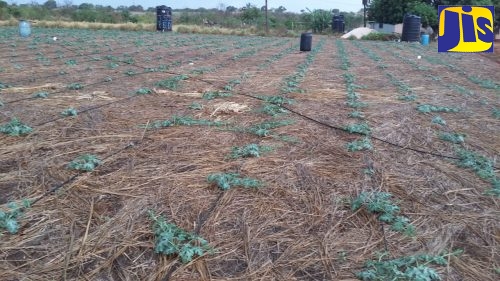St. Elizabeth Fits The ‘Breadbasket’ Profile
By: , July 15, 2022The Full Story
Rich soil, ideal climate, and the ability to produce large quantities of various crops fit the profile of St. Elizabeth, the parish that has the reputation of being the ‘breadbasket’ of Jamaica.
St. Elizabeth, Jamaica’s third largest parish, is an essential part of the nation’s food system, being able to add hundreds of thousands of tonnes of domestic food crops to the national domestic output.
The parish continues to account for the largest share of land under cultivation, and is able to help contribute significantly to the food security of the country.
Food production is mostly done on a large scale, including ground provisions, root crops, fruits, vegetables, peas, corn, sugar cane, pimento and ginger. There are also the rearing of cattle, fish farming and the production of rum.
The more than 35,000 registered farmers and fisherfolk, Government agencies and other stakeholders are the driving force behind St. Elizabeth’s continued agricultural success. Their extensive work and inputs have allowed the parish to maintain its position throughout the decades, even as Jamaica celebrates its 60th Independence anniversary this year.
For Secretary of the Flagaman’s Farmers Benevolent Society, Veron Reynolds, St. Elizabeth deserves its moniker of the breadbasket parish for its resilience, as well as steps taken in the 1960s and 1970s.

The 65-year-old farmer gives an account of the early days of farming and how the trade evolved in the parish.
“From my childhood years coming up, I watched my father and close relatives do farming using a bucket to carry water to wet the plants. I remember when they used a knapsack sprayer, where one would walk with the container while someone else is using the sprayer to spray the chemical,” explains Mr. Reynolds, who has been a farmer for over 45 years.
“The farmers at the time used their abilities and their knowledge to produce at seasonal times. [They] could forecast the rain at specific times…so they would go ahead and do the necessary planting using their buckets,” Mr. Reynolds says.
“Now, things have changed and improved through the implementation of drip irrigation, where 1,000-gallon containers are placed in the field, drip hoses are run in the field, trucks come in and fill up those tanks and the farmers wet where they want, fertigate when they want, which makes it much easier,” he adds.

Mr. Renyolds, who also worked for years as an extension officer, tells JIS News that the 1970s, particularly, was a crucial point in St. Elizabeth’s history as it relates to the growth and expansion of livestock and crop farming.
He says the Government of the time, as well as other stakeholders, began to invest heavily in the sector through technical assistance, technological innovations and added resources.
“The old Agricultural Development Corporation (ADC) factory used to be right here in Flagaman where the Government of the day saw it fit to place a tractor, so our farmers could get it for hiring within the surrounding community. Farmers from as far as Black River, Mountainside and Hounslow would also get the technical aspect and information from the factory, which would also buy their produce at the time,” Mr. Reynolds recounts.
Today, St. Elizabeth is covered by large swathes of fertile farmland and cutting-edge agricultural innovations. Farmers in the southwest of the parish specialise in the growing of vegetables and fruits, whereas in the northwest it is predominantly ground provisions as well as banana, plantain and other crops.
In the central part of the parish, there are plenty of livestock, such as cows, sheep, goats and pigs. Chickens can be found all over the parish.
Local fisherman, Sean Taylor, from Treasure Beach, tells JIS News that St. Elizabeth is among the largest fish producers in Jamaica.
Mr. Taylor, who has been a fisherman for more than 25 years, says the increase in technology and improved fishing techniques have helped to improve catches throughout the years.
“One of the things is that when I was going to sea, we normally use just a compass, but today, fishermen have handheld GPS that they use. We would place most of our traps afloat. That means we have a buoy that we can go and just identify, but the evolution in fishing saw the [adoption] of technology when you are not fishing close by the island,” the 53-year-old fisherman shares.
Fish farming is also active in St. Elizabeth, according to Mr. Taylor, who points to an influx of fisherfolk over the past two years during the COVID-19 pandemic.
“So, when you look at the diversity of the parish that produces sorrel, yam, sweet potato, Irish potato and the fishing industry, if you check all the markets around Jamaica, you will find vendors selling produce from St. Elizabeth,” Mr. Taylor says.

